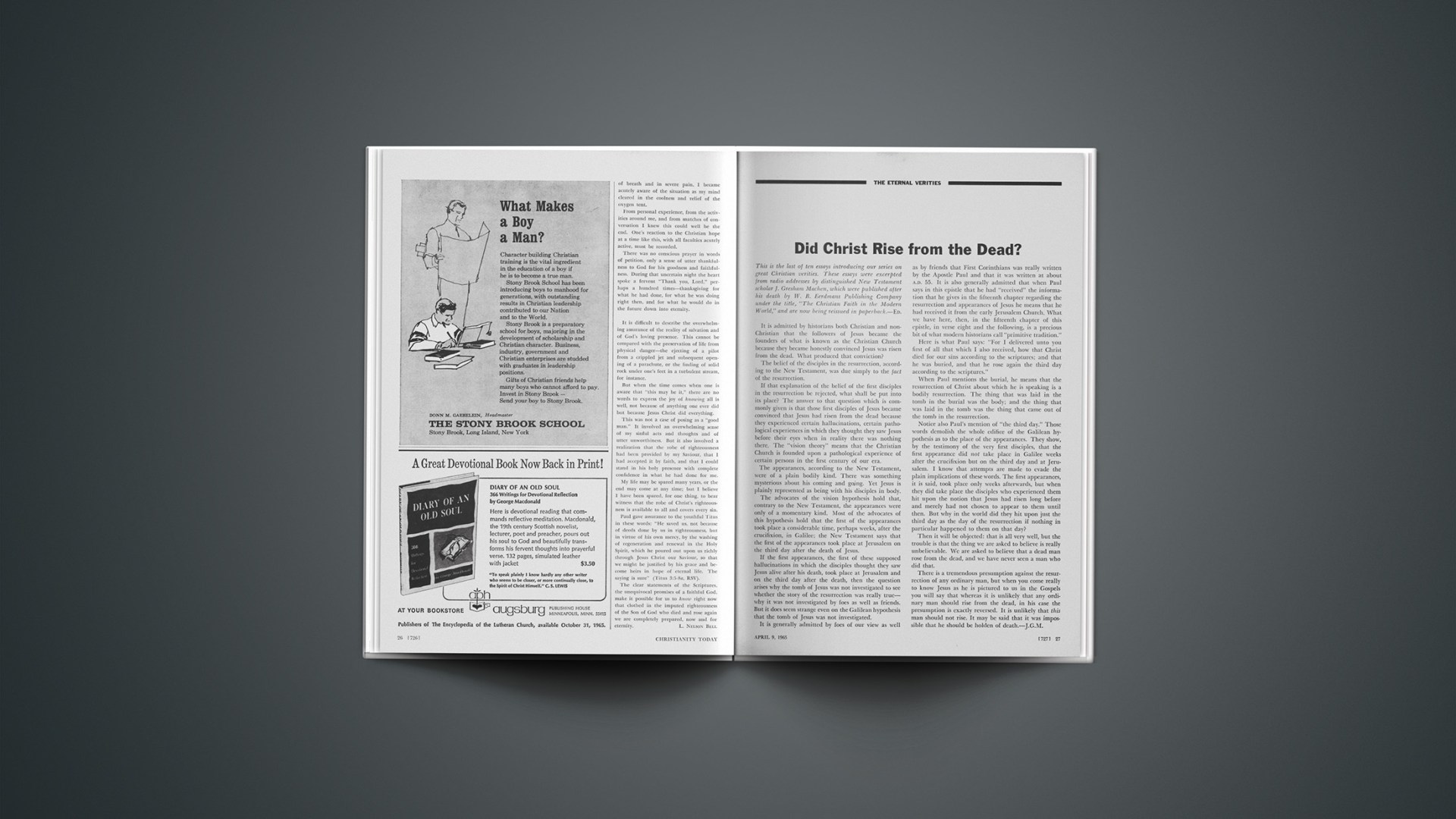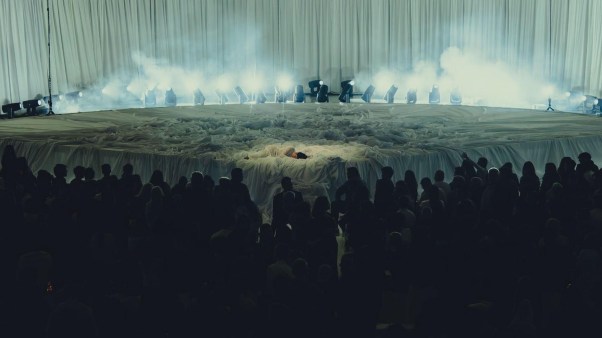This is the last of ten essays introducing our series on great Christian verities. These essays were excerpted from radio addresses by distinguished New Testament scholar J. Gresham Machen, which were published after his death by W. B. Eerdmans Publishing Company under the title, “The Christian Faith in the Modern World,” and are now being reissued in paperback.—ED.
It is admitted by historians both Christian and non-Christian that the followers of Jesus became the founders of what is known as the Christian Church because they became honestly convinced Jesus was risen from the dead. What produced that conviction?
The belief of the disciples in the resurrection, according to the New Testament, was due simply to the fact of the resurrection.
If that explanation of the belief of the first disciples in the resurrection be rejected, what shall be put into its place? The answer to that question which is commonly given is that those first disciples of Jesus became convinced that Jesus had risen from the dead because they experienced certain hallucinations, certain pathological experiences in which they thought they saw Jesus before their eyes when in reality there was nothing there. The “vision theory” means that the Christian Church is founded upon a pathological experience of certain persons in the first century of our era.
The appearances, according to the New Testament, were of a plain bodily kind. There was something mysterious about his coming and going. Yet Jesus is plainly represented as being with his disciples in body.
The advocates of the vision hypothesis hold that, contrary to the New Testament, the appearances were only of a momentary kind. Most of the advocates of this hypothesis hold that the first of the appearances took place a considerable time, perhaps weeks, after the crucifixion, in Galilee; the New Testament says that the first of the appearances took place at Jerusalem on the third day after the death of Jesus.
If the first appearances, the first of these supposed hallucinations in which the disciples thought they saw Jesus alive after his death, took place at Jerusalem and on the third day after the death, then the question arises why the tomb of Jesus was not investigated to see whether the story of the resurrection was really true—why it was not investigated by foes as well as friends. But it does seem strange even on the Galilean hypothesis that the tomb of Jesus was not investigated.
It is generally admitted by foes of our view as well as by friends that First Corinthians was really written by the Apostle Paul and that it was written at about A.D. 55. It is also generally admitted that when Paul says in this epistle that he had “received” the information that he gives in the fifteenth chapter regarding the resurrection and appearances of Jesus he means that he had received it from the early Jerusalem Church. What we have here, then, in the fifteenth chapter of this epistle, in verse eight and the following, is a precious bit of what modern historians call “primitive tradition.”
Here is what Paul says: “For I delivered unto you first of all that which I also received, how that Christ died for our sins according to the scriptures; and that he was buried, and that he rose again the third day according to the scriptures.”
When Paul mentions the burial, he means that the resurrection of Christ about which he is speaking is a bodily resurrection. The thing that was laid in the tomb in the burial was the body; and the thing that was laid in the tomb was the thing that came out of the tomb in the resurrection.
Notice also Paul’s mention of “the third day.” Those words demolish the whole edifice of the Galilean hypothesis as to the place of the appearances. They show, by the testimony of the very first disciples, that the first appearance did not take place in Galilee weeks after the crucifixion but on the third day and at Jerusalem. I know that attempts are made to evade the plain implications of these words. The first appearances, it is said, took place only weeks afterwards, but when they did take place the disciples who experienced them hit upon the notion that Jesus had risen long before and merely had not chosen to appear to them until then. But why in the world did they hit upon just the third day as the day of the resurrection if nothing in particular happened to them on that day?
Then it will be objected: that is all very well, but the trouble is that the thing we are asked to believe is really unbelievable. We are asked to believe that a dead man rose from the dead, and we have never seen a man who did that.
There is a tremendous presumption against the resurrection of any ordinary man, but when you come really to know Jesus as he is pictured to us in the Gospels you will say that whereas it is unlikely that any ordinary man should rise from the dead, in his case the presumption is exactly reversed. It is unlikely that this man should not rise. It may be said that it was impossible that he should be holden of death.—J.G.M.










